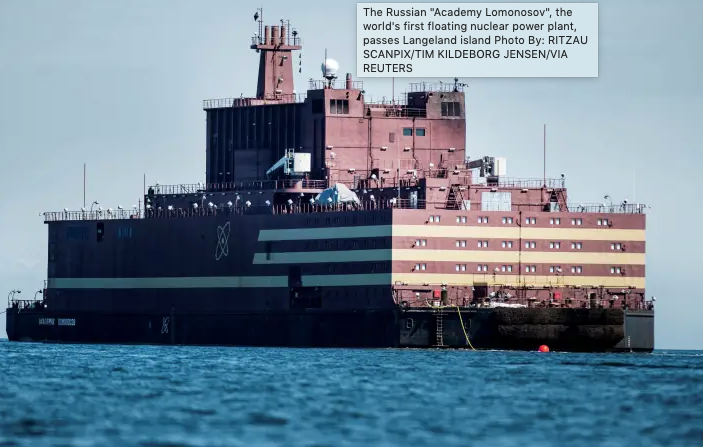Russia’s Akademik Lomonosov is preparing to set sail across the Northern Sea Route.
BY RACHEL WOLF AUGUST 18, 2019 20:45
With a gym, an alcohol-free bar, and pool on board, Akademik Lomonosov, Russia’s latest nuclear facility, sounds like a cruiseline. In reality, it is in fact the world’s first floating nuclear power station. Some view this as a technological advancement, while others, like Jan Haverkamp, a nuclear-energy expert at the environmental organization Greenpeace who dubbed “Chernobyl on ice,” see it as a disaster waiting to happen.
After a decade of construction, facility is preparing to set sail across the Northern Sea Route. The plan is to have Lomonosov float close to Pevek, a Russian port town in the Arctic where it will provide nuclear power to an estimated 100,000 homes. The new facility will allow Russian authorities to halt the use of an older nuclear plant as well as a coal-burning power station. Additionally, the floating plant would provide power to remote areas such as Pevek, which are only accessible via air or sea travel, without using large pieces of land.Read More Related Articles
The idea of a floating nuclear power plant isn’t new. In the 1960s the United States had a floating nuclear plant in the Panama Canal.
While clean energy is part of the goal of the vessel, there is a bigger-picture plot. Vladimir Putin aspires to expand Russia’s reach into the Arctic, raising geopolitical concerns in the United States. The Northern Sea Route, where the vessel will be sailing, is a nature-made Panama Canal – a shipping route, made by the melting ice in the Arctic, which turns out to be quite lucrative.
Russia plans on eventually mass-producing the floating plants for countries around the world. The project currently costs an estimated $450 million, however Rostham, the Russian state company that is in charge of nuclear projects, estimates that the price of each facility will fall as more are built.
While the energy that the plant produces is going to be nuclear energy, which is considered “clean,” environmentalists are not so pleased with the project. Many environmentalists are concerned that having a floating nuclear power plant could become volatile in the face of natural disasters, such as tsunamis. Haverkamp told Business Insider, “They’ve literally said it’s unsinkable and those are the very words that were used for the Titanic. For me, that is an alarm light flashing very brightly. It’s overconfidence, and overconfidence is not good for ultra-hazardous activities.”
The environmentalists’ concerns may not be totally unfounded. Despite its status as a leader in nuclear energy, Russia has also had its share of nuclear accidents. According to The Washington Post, just 10 days ago, on August 8th, there was an explosion at Russia’s Nonoksa missile testing facility, which killed seven people and spiked radiation levels nearby. Russian military officials initially denied the radiation leak despite evidence from atmospheric monitoring devices.
Despite environmental concerns, those running Lomonosov have stood their ground on the nuclear facility, claiming they took every safety precaution, including a non-electric backup system that can keep a reactor cool for 24 hours. They further say that because it’s in water that cooling would be easier. However, environmentalists think that 24 hours will not be enough time to stop a nuclear disaster from occurring.
Akademik Lomonosov is supposed to leave the docks in one month, at which point it will signify not only the end of a decade of construction, but potentially a new age of nuclear energy.
Source: Jerusalem Post
